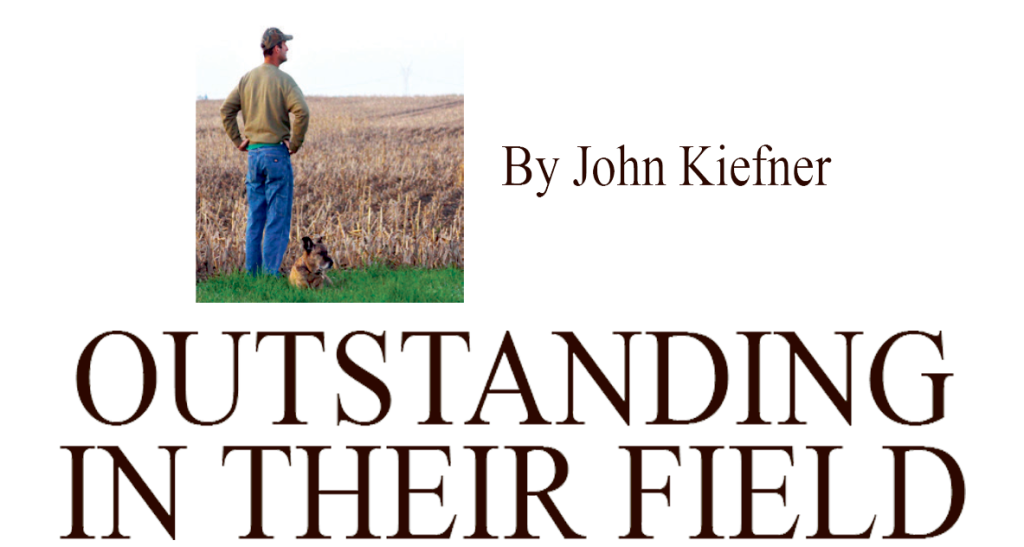Outstanding In Their Field

Have you ever cried over spilled milk? When I wrote last week’s article, I received replies about gas cans and milk cans. Following is the knowledge I have gleaned about the evolution of fluid milk on farms like my dad’s and grandpa’s in Will County.
When I was born in 1964, it had been over 10 years since my dad had quit milking cows. On the farm was an old block building called the milk house. About half of the milkhouse had what I called the concrete bathtub. A pipe ran lengthwise over the top of the bathtub, and 8 milk cans sat upside down on it. It was as if one day they were washed and set upside down to dry, only to never be filled with milk again.
The milk house had a water line that was used to fill the “bathtub.” I later learned that it wasn’t a bathtub for bathing. Each day after the cows were milked, the cans were filled with milk that was slightly over 100 degrees. They were placed in the concrete tub, and cold water was filled up around them to cool the milk. This was the earliest form of refrigeration in the absence of electricity on the farm. When my dad was a child, they would have pumped the water by hand since electricity did not arrive to the farm until he was in high school.
Cows drink a lot of water in a day. Since it was a lot of work to pump water by hand, the water used to cool the milk cans after each milking was not wasted. An overflow pipe went out of the bathtub in the milk house to an outside stock tank for the cows to drink from. Each time fresh cold water was pumped into the bathtub while filled with milk cans, the overflow would fill the tank outside to help provide water for the cows for the day.
Now for some hearsay, meaning the following is believed to be true but cannot be confirmed: Weber Dairy in Joliet bought my dad’s and grandpa’s milk about 75 years ago. Each farmer had a number that was painted on their milk cans. I have 7 cans with the number 5 barely legible on them. A farmer usually owned enough cans to hold 2 day’s worth of milk. Each day when the milk man picked up the full cans, he would return the empty cans from the previous day’s pickup. I suspect that it was not much after WWII, and the advent of electricity to rural America, that health regulations required the elimination of the cold bath method of chilling milk, replacing it with the refrigerated milk tank.
Farmers who lived near the railroad would ship the raw milk by rail into big cities. Farmers who lived more rural could not warrant the expense of transporting raw milk great distances. They would add value to their milk by separating the cream and/or churning butter. The cream and butter could be equal to half or more of the value of the milk and be less than 1/8th the volume of raw milk. After removing the more valuable fat from the milk, many farmers would feed the leftover milk to their pigs and sell the cream and butter for income.
The milkhouse I remember is long gone; the cans remain on my farm. I was lucky enough to visit a friend’s farm with an old milkhouse almost identical to what I remember from my youth. See Farm Days Gone By to the right of this article in today’s paper for more info.
I suspect that when finances were tough decades ago, many tears were indeed shed when milk was spilled. Ironically, the EPA Environmental Protection Agency, did initially consider spilled milk as a hazardous material. That previous sentence is not hearsay; you can look it up yourself if you want. I wonder what the EPA would think about putting gasoline in a milk can?
